The Evans Gambit is a very sharp attacking line that stems from the Italian Game.
The opening starts with the sacrifice of a wing pawn by White.
This pawn sacrifice allows White to initiate a sharp attacking game that features quick development of pieces and the possibility of giving the opponent’s king a huge scare.
The Evans Gambit starts with 1. e4 e5 2. Nf3 Nc6 3. Bc4 Bc5 4. b4.
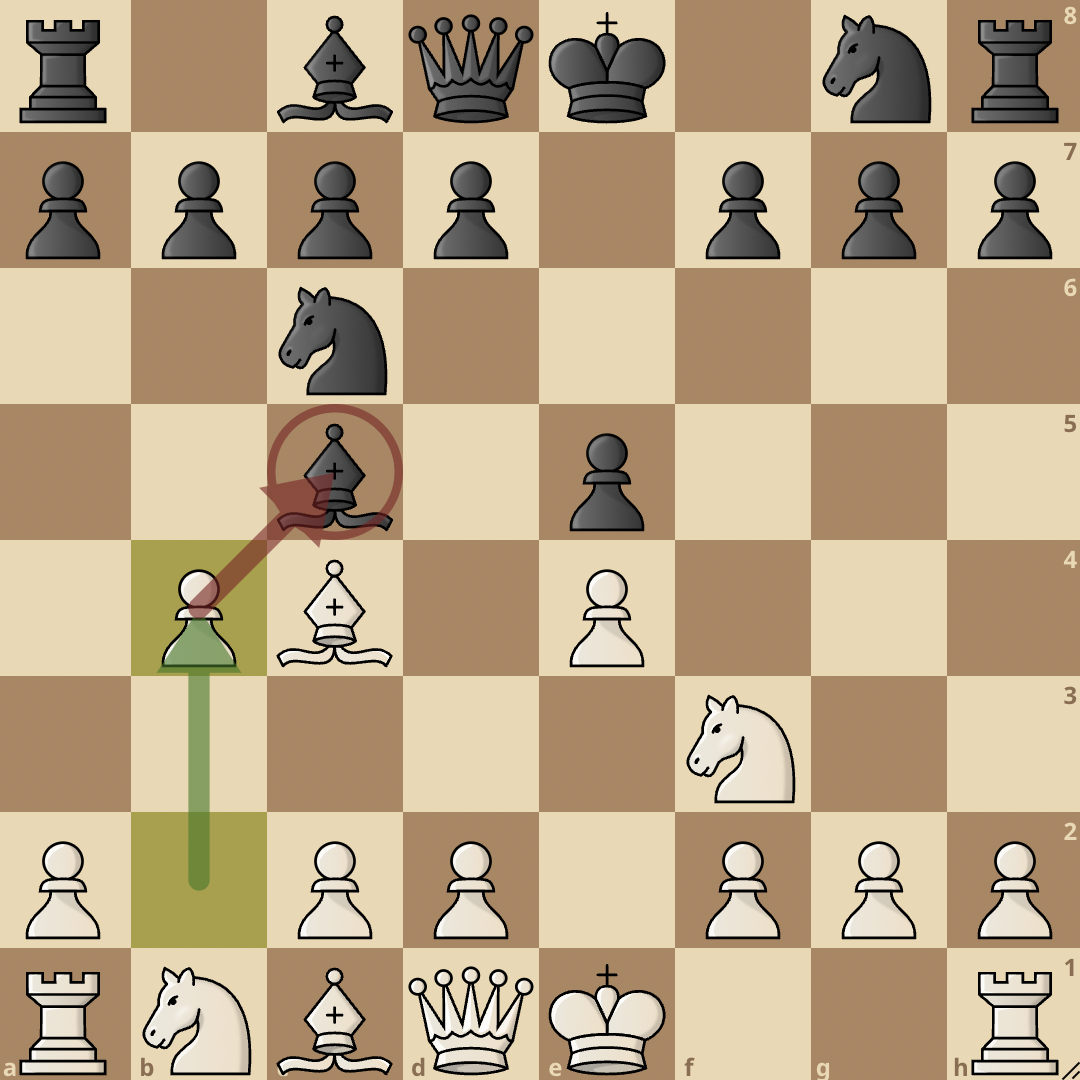
By playing b4, White offers Black the b-pawn. If Black accepts the gambit, White gets rapid development of their pieces. Black can choose to either capture the pawn or decline the gambit.
The Evans Gambit has some popular variations, let’s go over them.
Evans Gambit Accepted
If Black chooses to accept the gambit, we enter the Evans Gambit Accepted variation.
Black can choose to capture with 4…Bxb4 or 4…Nxb4. Bxb4 is the most accurate of the two moves.
This is because if Nxb4, the following sequence happens: 5. c3 Nc6 6. d4.

White plays 5. c3 and kicks the knight back and then follows up with d4 with a tempo on the bishop. White gains a lot of space and will easily develop their pieces. This is why 4…Bxb4 is preferred.
4…Bxb4
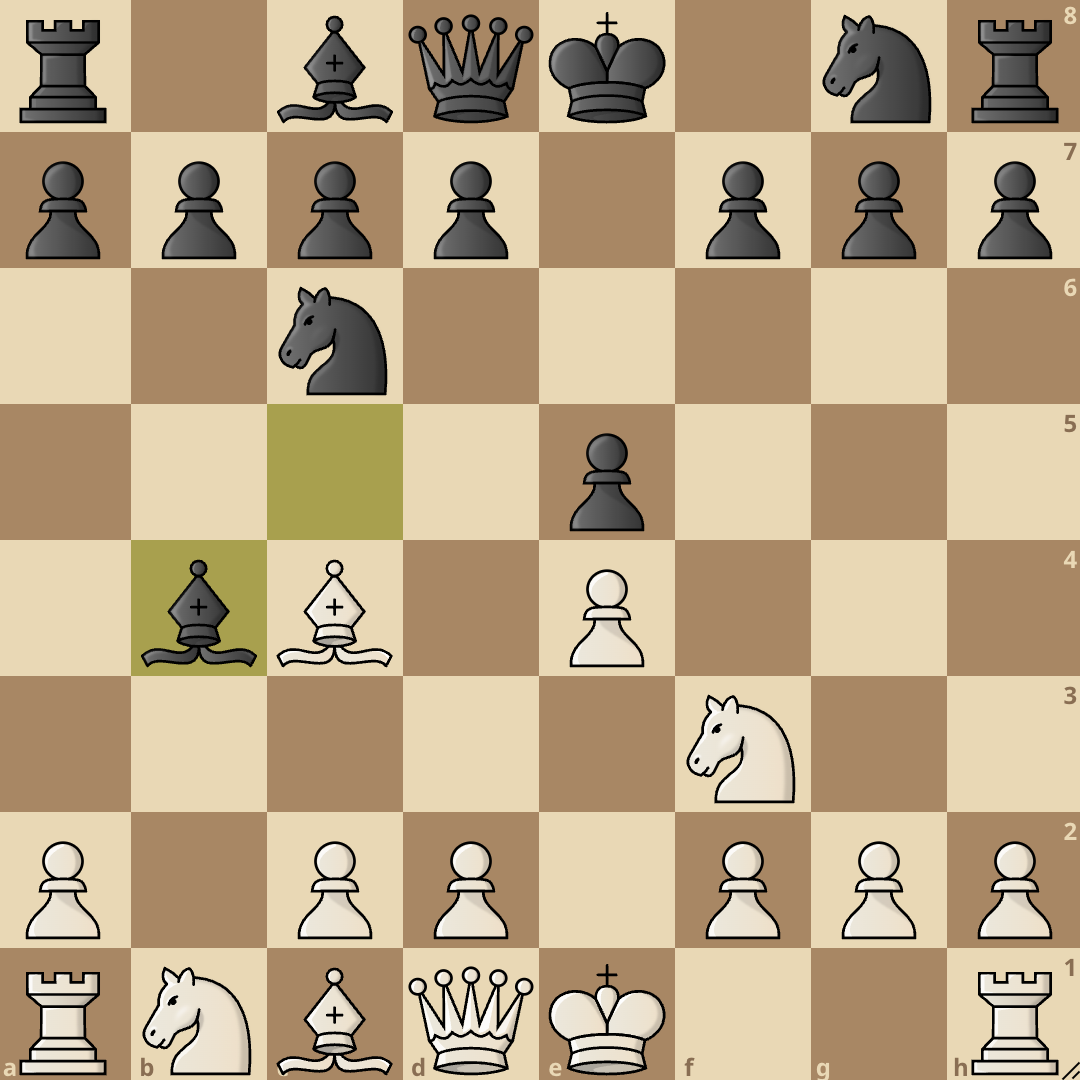
The best way to accept the gambit is to play 4…Bxb4, from here, White continues with 5. c3 and Black has three main options, they are 5…Bd6, 5…Ba5 and 5…Be7.
5…Bd6
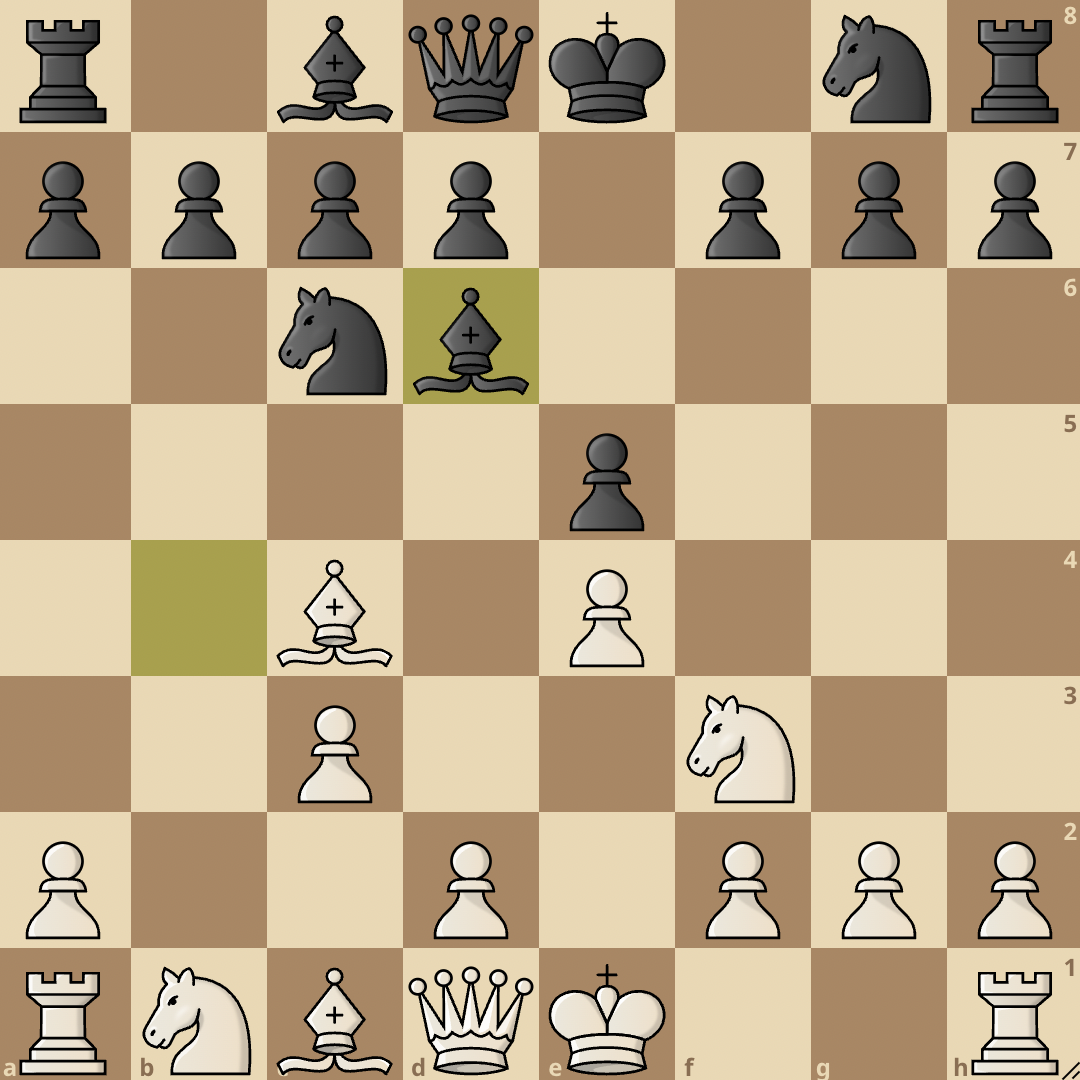
Full main variation: 5…Bd6 6. d4 Nf6 7. 0-0 0-0 8. Nbd2 h6 (to prevent Ng5) 9. Re1 Re8 10. Qb3 Qe7

After c3, Black may choose to play 5…Bd6, White then continues with 6. d4 and Black plays 6…Nf6. The e5 pawn is well protected by the c6 and d6 bishop so there is no danger of it getting captured.
Both sides then castle with 7. 0-0 0-0 and White develops their knight with 8. Nbd2. Black plays 8…h6 to protect the g5 square.
White now has to decide whether to capture in the center or keep the tension. It is a general rule in the opening that keeping the tension is preferable so White plays 9. Re1, Black also keeps the tension and plays 9…Re8.
White plays 10. Qb3, attacking the f7 square with the queen and bishop so Black defends with 10…Qe7.
The position here is very comfortable for White and it offers some attacking chances.
5…Ba5
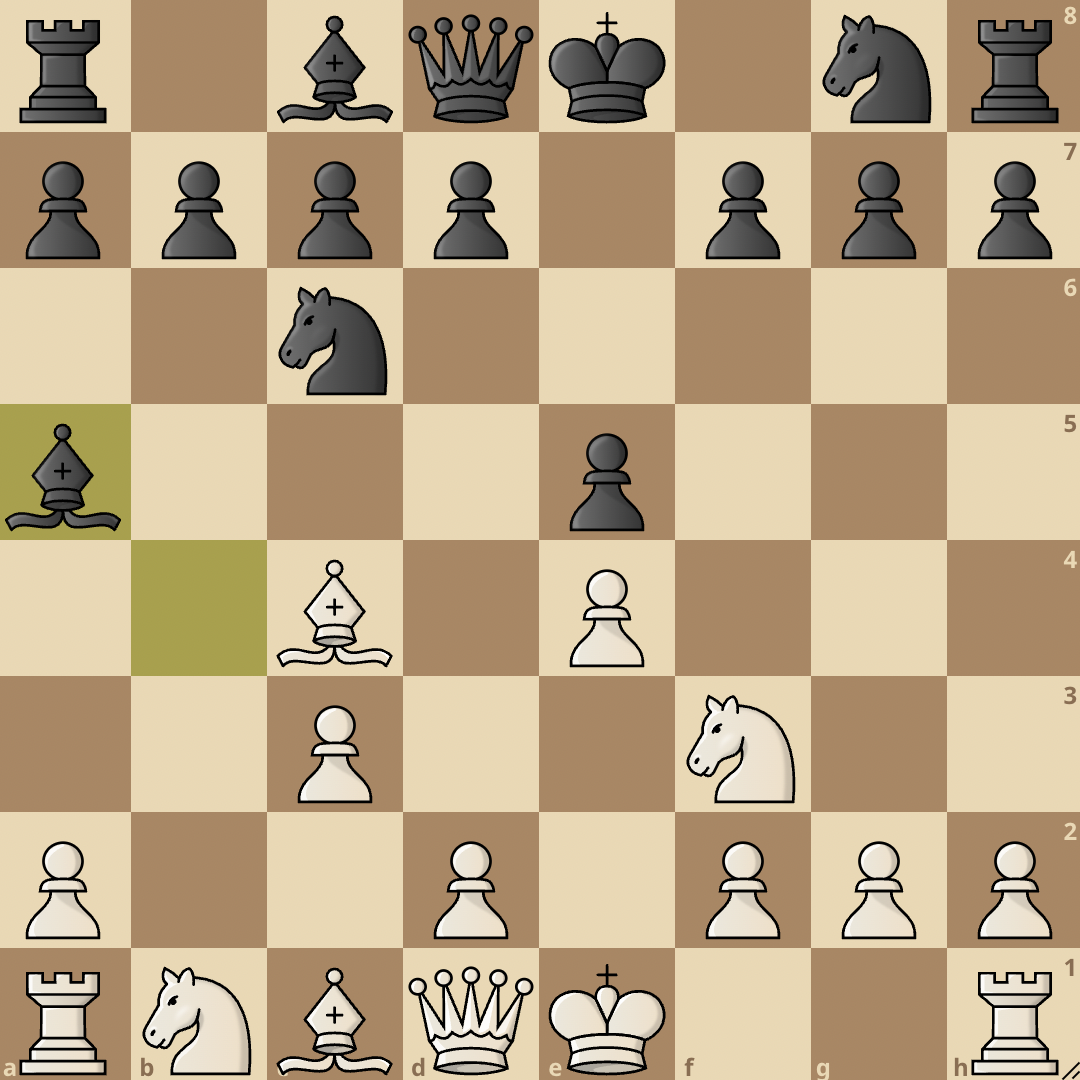
Side variation: 5…Ba5 6. d4 exd4 7. 0-0 dxc3 8. Qb3
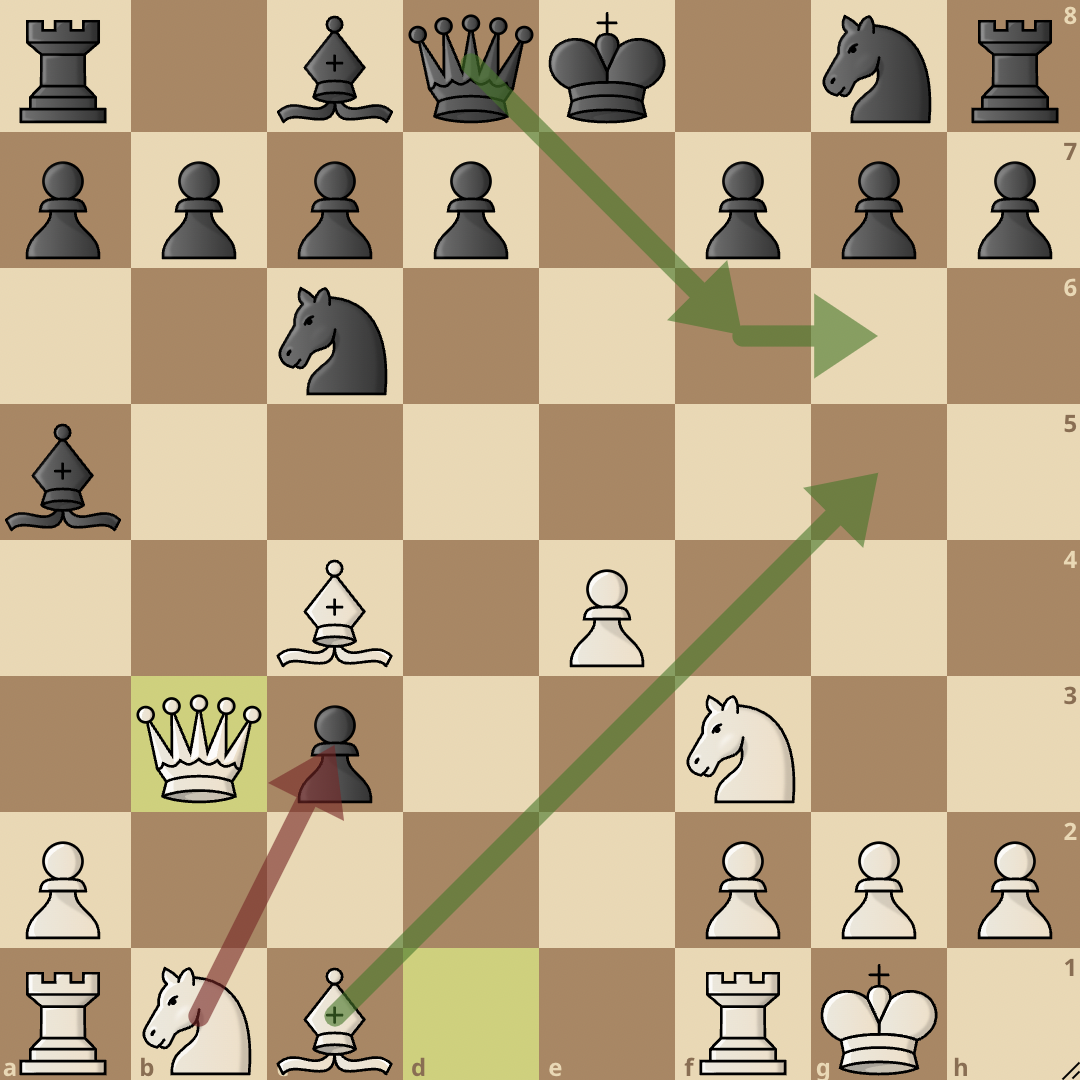
Another response Black can choose after 5. c3 is 5…Ba5.
White then continues with 6. d4 and Black captures with 6…exd4. White castles with 7. 0-0. Here, Black should play Nge7 or Nf6.
If Black goes on to play 7…dxc3 then White gets a lot of attacking chances after 8. Qb3. Black would have to be very careful or else they would find themselves in a lot of trouble.
5…Be7

Full main variation: 5…Be7 6. d4 Na5 7. Be2 exd4 8. Qxd4 Nf6 9. e5 Nc6 10. Qh4 Nd5 11. Qg3 g6 12. 0-0

The 5…Be7 line is a very exciting one.
White will continue in the normal fashion and attack the center with 6. d4, Black then plays 6…Na5, attacking the c4 bishop.
White now moves the bishop to e2 and Black captures in the center with 7…exd4. White has the option of recapturing with the pawn or the queen, however recapturing with the queen is the most common, so White plays 8. Qxd4.
The white queen also attacks the g7 pawn so Black plays 8…Nf6. White now attacks the knight with 9. e5.
Moving the knight back is not a good move, so Black plays the correct 9….Nc6, chasing away the White queen.
The queen then moves to h4. While this looks like a risky move, it’s really not as after Black plays Nd5, White simply plays 11. Qg3, moving out of the reach of the black bishop and putting pressure on the g7 pawn. Black defends the pawn with 11…g6 and White castles kingside.
This position promises an attacking and exciting game for White. Black also have excellent counterattacking chances.
Evans Gambit Declined
1. e4 e5 2. Nf3 Nc6 3. Bc4 Bc5 4. b4 Bb6
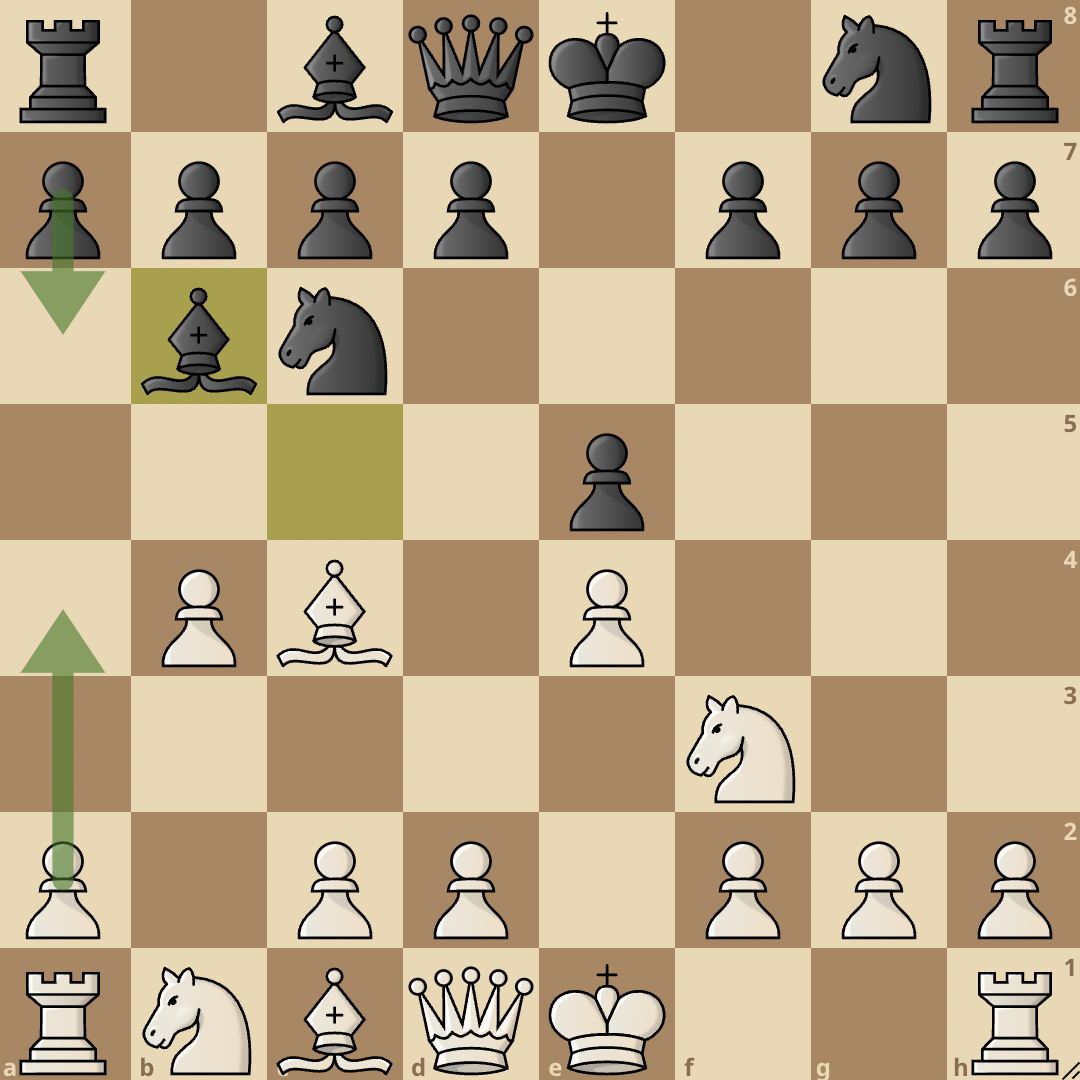
We’ve seen what happens if Black decides to accept the pawn and go for the Evans Gambit.
But they can also decline the gambit by playing 4…Bb6. This, however, results in a calm and somewhat boring game for both sides.
Successful Deployments
Touch the moves or move the board around for a better interactive experience.
Adolf Anderssen v Jean Dufresne, Berlin 1852
The game between Adolf Anderssen and Jean Dufresne is one of the most popular chess games. It is also known as the Evergreen game. This game featured the Evans Gambit, and Adolf Anderssen employed it to create a chess brilliancy for the ages.
Mikhail Tal v Milijs Brakmanis, URS 1959
Who’s better to employ the Evans Gambit than the greatest attacking player to ever grace the chessboard? In 1959, Mikhail Tal tapped into the powers of the Evans Gambit against Milijs Brakmanis and won a very nice game.
Alexey Shirov v Jan Timman, Biel 1995
While the Evans Gambit is not very popular these days, it was in vogue in the times of the old masters. Masters like Alexey Shirov used it to great effect and won a lot of games with it. His 1995 game against Jan Timman showed Shirov’s prowess with the Evans Gambit.





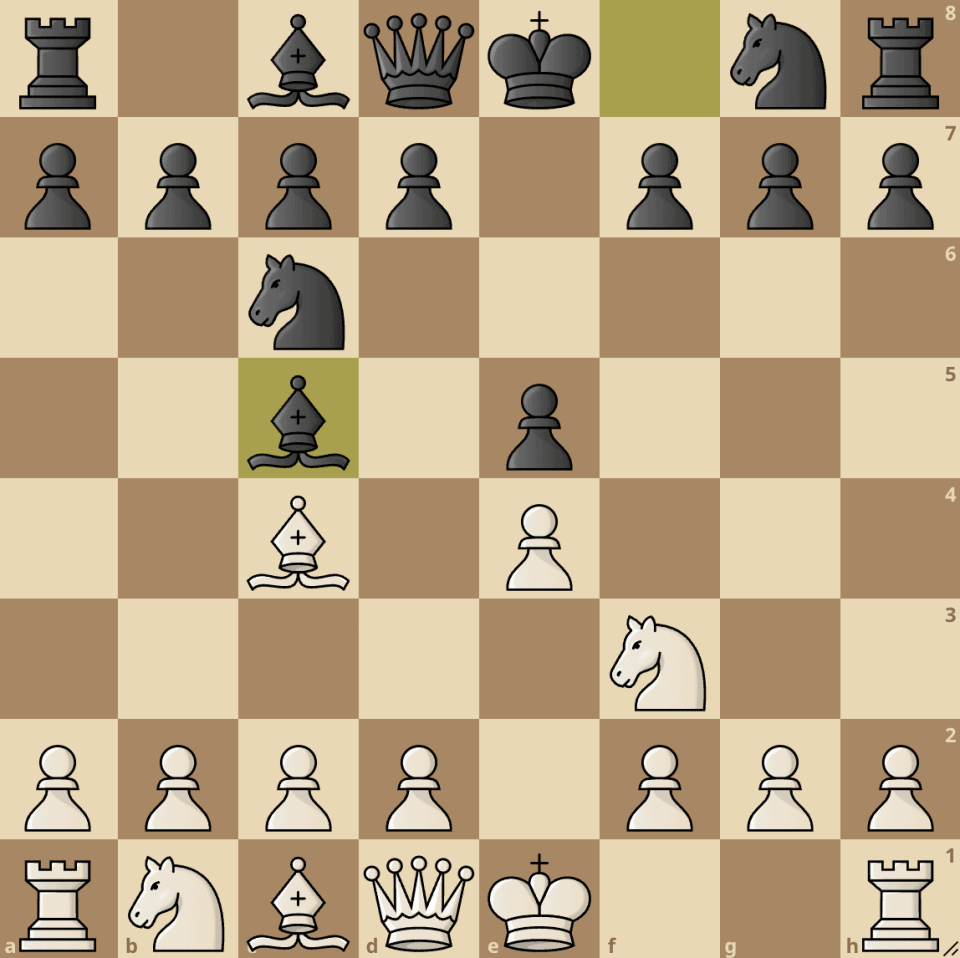

join the conversation